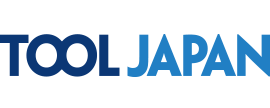Now that you understand the importance of ergonomic tools, how do you identify them? Here are some key features to look for:
1. Handle Design
Ergonomic handles are often contoured to fit the shape of your hand comfortably. They may have non-slip grips or cushioned surfaces to reduce the strain on your hand and fingers. When choosing tools, pay attention to the handle design and how it feels in your hand.
2. Weight and Balance
An ergonomic tool should be well-balanced and not too heavy. A balanced tool is easier to control and reduces the strain on your muscles. If a tool feels excessively heavy, it may cause fatigue and increase the risk of injury over time.
3. Adjustability
Some tools come with adjustable features to accommodate different body types and work requirements. For example, adjustable chairs, keyboards, and power tools allow you to customise them to your specific needs, reducing the risk of discomfort or injury.
4. Vibration Dampening
In certain industries, such as construction and manufacturing, tools that produce vibrations can lead to hand-arm vibration syndrome. Ergonomic tools in these fields often include vibration dampening technology to protect workers from these harmful effects.
5. User-Friendly Controls
For power tools and machinery, consider equipment that comes with straightforward, easy-to-grasp controls. This includes well-labelled buttons, switches, and levers that allow you to quickly adjust settings or turn the tool on and off. Intuitive controls can minimise the learning curve, reduce the chances of accidents, and ensure that you can operate the equipment confidently.

 October 11-13, 2023 |
October 11-13, 2023 |  Makuhari Messe, Japan
Makuhari Messe, Japan